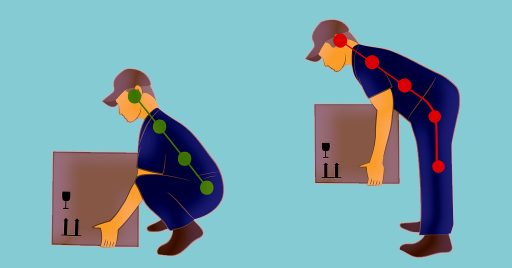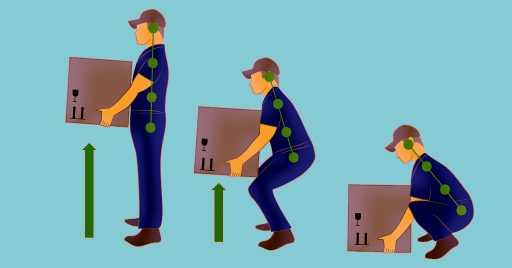Lift an object manually contributes to a large percentage of musculoskeletal disorders reported every year around the world. According to CDC, over half a million cases of musculoskeletal disorders reported annually in the USA occur due to wrong manual material handling (MMH).
Musculoskeletal disorders usually involve strains and sprains to the lower back, shoulders, and upper limbs. They can cause protracted pain, disability, medical treatment, and financial stress. The often diseases related to musculoskeletal disorders are osteoarthritis, lumbar herniated disc, and cervical disc, resulting in pain and chronic disease.
Ergonomic hazards are among the common workplace hazards, and besides workers who must be aware of them and protect themselves, employers must take the ergonomic hazards seriously. The musculoskeletal disorders usually cause employers to pay the bill, either directly or through workers’ compensation insurance. They must also cope with losing their workers’ full capacity since they usually get time off from work because of musculoskeletal disorders.
There are some technics for lifting objects manually which can help employees to avoid musculoskeletal disorders. Employers and safety crew must also be aware of these technics and inform workers about them.
Table of content
Preventing Injury: Best Practices for Manual Lifting at Work
Several manual lifting techniques exist to assist in handling objects, reducing the risk of musculoskeletal disorders among employees. It’s imperative for employers and safety personnel to familiarize themselves with these techniques and effectively communicate them to workers.
1- Determine the object
To lift an object manually, first, determine if the load is solid or liquid. A container with a liquid material can be harder to lift and move. Its weight can shift around while you are carrying it. Besides, assure not to tip or lean the object while moving it. If the item is solid, before lifting, check it for loose or moving parts. The unsteady part can change the weight or fall off.
2- Estimate the weight
Try to move up one corner of the item slowly to approximately estimate its weight. It would be better to kneel on the ground and slowly lift the object’s corner with both hands. If you can not move up one corner completely, don’t attempt to lift the thing alone.
Lifting an unexpectedly heavy object can cause low-back loading and loss of balance. It is also a significant risk factor for low-back pain. Loading heavy items suddenly may increase muscle activation, stretch of ligaments and posterior disc, and balance loss. Therefore, to lift an object manually, estimate its weight carefully.
3- Stand in front of the object
Stand in front of the item with almost 30 cm or 1-foot distance. If the lifting object is oblong, to efficiently distribute the weight, stand on one of the long sides. Keep your feet a little bit wider than your shoulder width. Put one foot in front of the other.

4- Bend your knees and keep your back straight
Bend your knees and tighten your abs as if you squat down. It supports your lower back and helps you to keep your back straight.
Researchers recommend that you always bend your knees when lifting anything since it protects your back by helping you maintain your balance center and letting the strong muscles in your legs do the work of lifting.
5- Grab the load
First, find sturdy handholds that you can easily hold onto, and the object doesn’t slip out of your hand. Grab the load near the bottom, or the heaviest point to control it better. While you are lifting a load, always keep your back straight. Never try to lift an object manually with one hand, and if you can, wear safety gloves.
6- Straighten your legs
As you are straightening your legs, keep your back straight and your torsos close to the object. Use only the muscles in your legs to stand up and lift the load and never arch or bend your back. Poor lifting is one of the common causes of low back pain, neck pain, and sciatica.

7- Walk slowly, never rush
When you lift an object manually, it would be better to keep your legs slightly bent to avoid losing your balance. Walk slowly and take small steps. Look ahead of you instead of looking down at the object. Avoid twisting your body and if you must carry the item for a long distance, take a break.
8- Set the object down
When you reach the destination where the item must be placed, first bend your knees slowly into a squat position, then gradually put it on the ground or other surfaces. Remember always to keep your back straight.
Additional Tips
- If the load is heavy or hard to move, ask your colleagues to help
- When two or more people are going to carry an object, be careful to distribute the weight evenly.
- Never rush to lift an object manually
- Take ergonomic hazards seriously